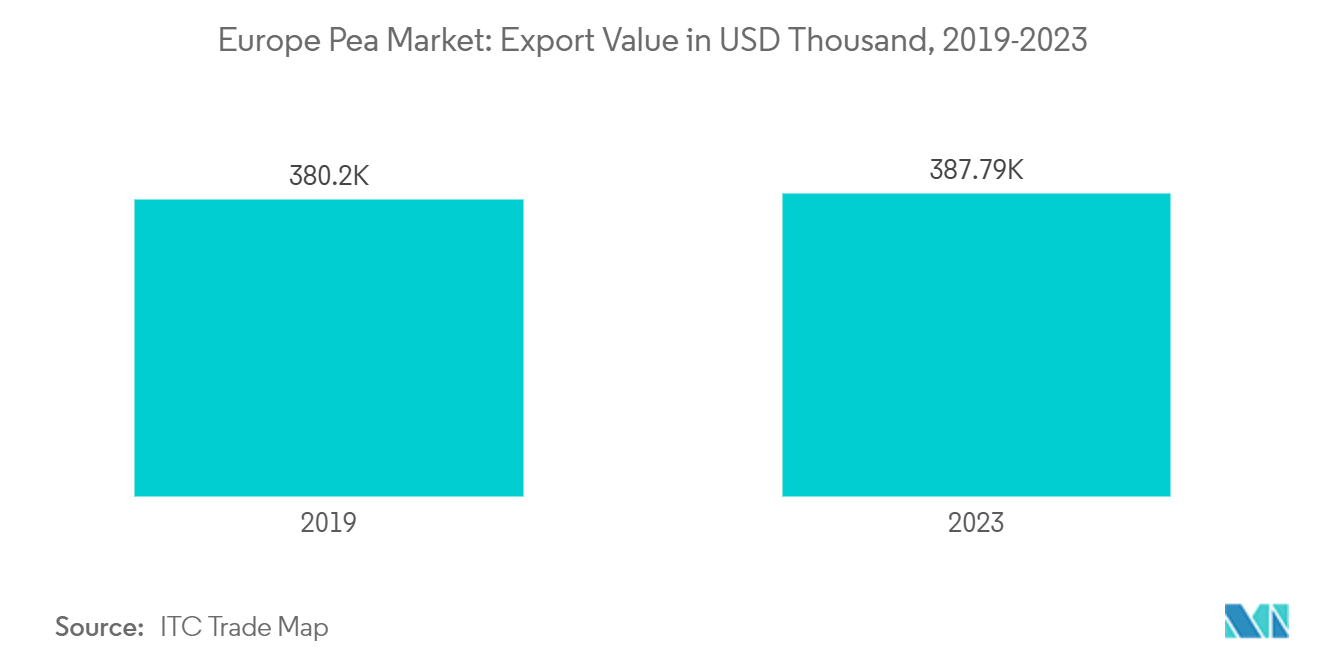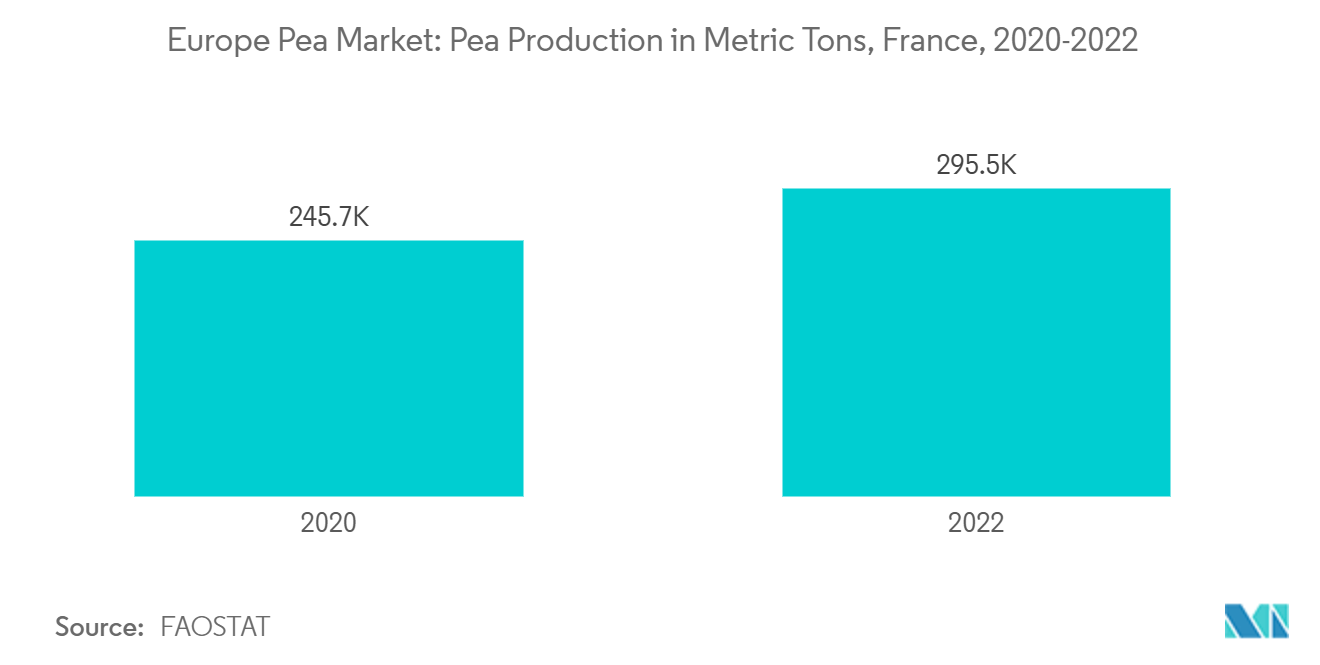Market Trends of Europe Pea Industry
Europe's Expanding Pea Export Market
Pea proteins have gained popularity across Europe due to their high nutritional value and increased Western influence, enhancing export potential from the region. According to the ITC Trade Map Statistics Database, Europe's pea exports increased from USD 380,195 thousand in 2019 to USD 387,791 thousand in 2023. The Netherlands, France, Germany, and Belgium are significant pea exporters in the area, accounting for nearly 30% of total exports in 2023. France is one of the major exporters of green peas, with export shares of 90.6% to Belgium and 6.2% to the Netherlands in 2023.
Government initiatives to increase pea production acreage and subsequent growth in domestic production are anticipated to enhance export opportunities. For example, in 2021, the Netherlands Ministry of Agriculture, a leading exporter in Europe, initiated efforts to increase the area used for high-protein crop cultivation, including peas, by a factor of five. The Ministry's National Protein Strategy aims for Dutch farmers to utilize 100,000 hectares for growing protein-rich legumes within a decade, five times the current area in use.
Furthermore, the European food processing industry is expanding its use of peas in various products, including protein powders, soups, snacks, and animal feed. As food manufacturers seek sustainable, non-GMO, and gluten-free ingredients, the demand for imported peas is increasing, driving up exports from major producers.

France Dominate the Market in the Region
France leads Europe in pea production, thanks to its favorable climate and fertile lands. The country's varied farming regions excel in cultivating both dry and garden peas. Key production areas like Hauts-de-France, Brittany, and Centre-Val de Loire boast optimal soil conditions and temperate weather. French growers, responding to market demands, cultivate a diverse range of pea varieties, including Cortex, Iconic, Cosmos, Brelen, Persan, Shazam, KWS Kidam, Hexago, Helio, and Jumper. FAOSTAT data reveals that France produced 245,700 metric tons of fresh green peas in 2020, a figure that rose to 295,500 metric tons by 2022.
France's strong domestic demand, especially for processed foods, animal feed, and plant-based pea protein, fuels its pea production. Additionally, France exports a significant amount of peas, particularly for food processing and animal feed, to markets in Germany, Spain, the UK, Italy, and other European nations, highlighting the quality of its produce.
Besides, French agriculture benefits from strong government policies, subsidies, and incentives, particularly under the European Union’s Common Agricultural Policy (CAP). These policies support sustainable farming, crop rotation (with peas as an important rotation crop due to their nitrogen-fixing properties), and innovation in the agricultural sector, which has helped increase pea production.


